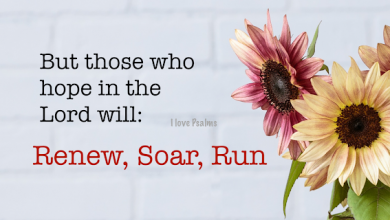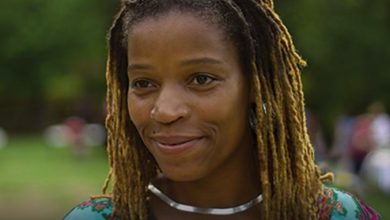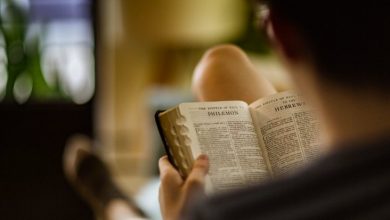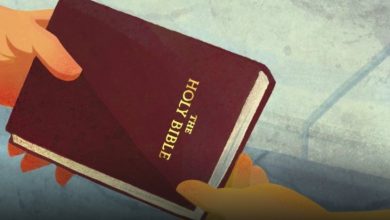Alpbach in Summer: the Prettiest Village in Austria
In a Nutshell
The Alpbach valley in summer is the perfect destination for mountain activities – ranging from walks through lush meadows to swimming in crystal clear lakes. Alpbach itself sits amid beautiful pastoral surroundings and every balcony is a blaze of colour, which is why it wins prizes as the prettiest village in Austria.
The Stats
Altitude: 1000m
Lifts open in summer: 2 gondolas
Walking trails: 900km
Cycle paths: 250km mountain bike trails and 116km road cycling trails
Lift pass: included in the free Alpbachtal Seenland Card (additional €3,00 per ride for mountain bikes and dogs)Official Site
Essential Advice for the Perfect Holiday
Contents

Alpbach has a long and unusual association with the UK. For reasons shrouded in evangelical obscurity, the village patron saint is St Oswald, a seventh-century king of Northumbria. But the real link developed in the late 1950s when Major Billy Patterson, a British soldier based in Germany, stumbled by chance on this quintessential Tirolean chocolate-box village and recognised its appeal for holidaymakers. Largely due to his efforts and later those of his widow, the British arrived in force and kept on coming.
In winter, the area is linked to Auffach in the neighbouring Wildschonau Valley. But in summer, Alpbach reverts to its farming origins. Life revolves, as it has done for centuries, around the green spired church and two village inns.
The Alpbachtal is a valley that branches off the Inn Valley, 25 minutes’ drive from the town of Worgl and 45 minutes from Innsbruck. Alpbach comprises ten settlements including the quaint village of Reith which is the closest (7km away) and Rattenberg (11km away), which is Austria’s smallest town with just 400 inhabitants and a medieval centre.
Then there’s the market town of Brixlegg (9km away); Kramsach (11km),’the lake village of Tirol’ and the setting for most of the valley’s watersports; and Brandenberg (18.5km), which is the home of delicious Brandenberger Prügeltorte – a cake prepared over an open fire. The other villages are Breitenbach, Kundl, Munster, and Radfeld.
Back to Top
Where to Walk

The Alpbachtal lies between the Kitzbühler Alps and Ziller Valley, in all-but-perfect hiker’s landscape of meadows, forests and medium-sized mountains. Over 900km of marked hiking and walking paths wind through it – graded easy, red, and black.
Free guided walks are on offer five days a week and they take in some gorgeous locations in Alpbach, Reith im Alpbachtal, Kramsach, Brandenberg and a city tour of Rattenberg. Just make sure you book in advance.
On your own, you can take a gentle stroll through the meadows, admiring the wild flowers and cows as you go. Or you can use the lift system to explore the steeper slopes above the treeline. One tip to remember is that the people who measure the length of Alpine trails tend to live at altitude. Holidaymakers should add 25-50% to the publicised time, especially if taking dogs or children with them.
Classic hikes can take up to six-and-half hours, but a good choice is the red-graded Panorama Weg, which we walked one afternoon. It’s billed at two hours and the route takes you up from the top of the gondola around the shoulder of the 2127m Wiederbergershorn. It’s a steepish scramble with spectacular views and the welcoming Horn Alm restaurant at the top.
The first stage took us an hour (with two dogs) and the return route around the Horn is, in reality, 90 minutes longer. The lift closes at 4.30pm and you need to take this into consideration when choosing your return route. If you miss the last cabin down, you need to factor in another two to three hours to walk back down to the village.
Outside Alpbach itself are yet more hiking opportunities. There’s a day hike organised by Sport Ossi – starting with an early-morning climb up to either the Bayreuther Hutte or the Berghaus for spectacular views down to the Inn Valley and Zillertal, then continuing on to Lake Zireiner. After a break you climb up to Rosswiese and continue via Anderl’s Almhutte, down to Aschau and back to Kramsach. The total time is around eight hours.
The local gorges – Kaiserklamm and Tiefenbachklamm at Brandenberg and the Kundler Klamm in Kundl – are worth doing and are suitable for families, although children under 10 years of age are advised to wear safety harnesses, which can be rented.
Back to Top
Mountain Biking and Road Cycling

The Transalp Challenge has come through here in July four years running, yet the area remains a little-known cycling destination. In fact there are over 20 mountain bike routes, ranging from 30 minutes to five hours long.
In this part of the Tirol, the Inn Valley is wider and offers a lot more variety than in many other destinations, so there is plenty of scope for easy family cycling. The range of gentle paths through meadows, along mountain trails and rambling cycle routes are ideal for e-biking, too.
Route 316 Kolber covers 12km of prepared road – good for beginners and those finding their cycling legs. Route 321 Alpbachtalrundfahrt is a more ambitious prospect at over 25km long; the climb is fairly steep, but worth it for the awesome views.
A highlight for the experienced mountain biker is the 40km round-tour of the Guffert. Leading up to the traditional Gufferthutte, the path levels out across the Brandenberger Ache where you can follow the route to the Kaiserhaus, which provides a good stopping-off place to enjoy a bit of local food.
You can also choose from 21 different road racing tours that start from Rattenberg, one of the stages on the UCI Road World Championships.
Finally, riders of all ages can test their skills in the new E-Trial Park Alpbachtal near the Galtenberg Family & Wellness Resort in Inneralpbach.
Back to Top
Watersports: White-Water Swimming and Rafting

The region boasts six lakes, four of them suitable for swimming. Our favourite is the extraordinary emerald-green Reintalersee, which has an easy walking path around it, and two bathing areas – one of them for picnickers. The other has the Fischerstube restaurant set above it. It’s worth booking a table for lunch on the terrace, with views over the lake whilst you enjoy – appropriately – delicious lake fish.
You can rent rowing boats and pedaloes to take out on the lake, or swim if you’re hardy. The lake itself is seven metres deep and the water is so clean you can drink it! If you’re driving here from Alpbach (it takes around half an hour), there’s a car park cross the road from the lake, and you can hire sunshades.
Tubing and wild swimming on the river

It’s a short drive from Alpbach to Kramsach, and here you’ll find lots of watersports at Sport Ossi. The outdoor centre offers canoeing, kayaking, rafting, white-water swimming and canyoning through the Kaiserklamm.
But the highlight is tubing. Waterpark fans may have tried drifting down a river in a giant, inflatable inner tube normally found inside car inner tyres. But the white-water rapids of the Brandberger Ache river make for a very different experience.
Equipped with wetsuit, life vest and helmet, guides lead you on a mad, 1.5km dash down this stretch of the River Brändi. Locals claim the sport was invented here, with families riding the river on truck tyre inners for the past 50 years.
The sport strikes a perfect balance between a serious adrenalin rush, and an activity all but the weakest of swimmers can try. You can also try zorbing on the Reintalersee. Zorbing, for those who haven’t already tried it, is where you climb inside a large inflatable plastic ball and attempt to walk on water.
For something a little tamer, head for one of the outdoor swimming-pools at Brixlegg, Münster or Kundl. Families can visit Worgl Water World in Worgl, which has an adventure pool with water-slide, a 25-metre sports pool, miniclub, sauna area, a Dead Sea salt bath, a tropical South-East Asian spa, and what is classed as ‘the world’s first double-looping water-slide’.
Lake and river fishing
The fresh cold water of the Brandenberger Ache is one of the few places in Austria where grayling spawn naturally. The river also provides high-quality rainbow and brook trout. You can fish between the Rohrbach Bridge and the Erzherzog-Johann-Klause (apart from a 2km section from Trauersteg to Baumbach) from the beginning of May until to the end of September, with one- to seven-day fishing tickets available to buy. Click here for more details.
Day or night fishing tickets for the Reintalersee can be bought at the Fischerstube restaurant. The lake water contains eel, bream and all kinds of white fish.
Back to Top
Climbing and High-Ropes

There is a high-ropes course at Kramsach, which you can arrange through Sport Ossi. Two more challenging via ferrata routes are above the Reintalersee in Kramsach and it takes 20 minutes to walk up to the start of the routes. Route 1 is classed as C/D degree of difficulty, and route 2 is graded E in terms difficulty and poses a challenge even for experienced climbers. The routes take 60 to 90 minutes to complete each, with a one-hour descent back to the Reintalersee and the Krummsee.
Back to Top
Golf and Tennis

There are several golf courses within easy reach of Alpbach: the closest is at Uderns (20 minutes’ drive), followed by Achensee (35 minutes), Westendorf (45 minutes), Innsbruck (60 minutes), and four in and around Kitzbuhel (60 minutes away). If you want to play tennis you won’t have to go far, with ten outdoor courts in the centre of Alpbach. Kramsach Tennis Club has indoor and outdoor courts, as well as a games room, cafe, and a playground. Brixlegg and Kundl also have tennis courts.
Back to Top
Other Summer Activities: from Ancient Farmhouses to Paragliding

From a distance, this 17th century Tirolean farmhouse appears to depict the perfect postcard image of a rural holiday home. The ancient wood and stone building clings to a hillside, surrounded by steep flower-filled meadows. It looks the perfect spot for a family farm holiday.
But as you get closer, you’ll see that creature comforts for the modern-day visitor are in short supply. Lighting is by candles. The minimalist bedroom is basic with a rough-hewn double bed and a baby’s crib at its foot. Washing facilities are limited to a bowl and a pitcher of water – no sign of a bathroom…just a potty under the bed.
This house (pictured above) is one of 14 historic, but derelict, buildings rescued from villages across the Tirol. Each one has been dismantled, restored, and carefully reassembled at the Tiroler Farmhouse Museum in Kramsach. A visit here makes a fascinating day out – there’s a classic village Gasthof where you can eat and, on set dates, there are demonstrations of spinning, breadmaking and other country crafts by artisans in traditional costume bringing the past to life. Entry is free with the Alpbach Seenland Card.
At Reith im Alpbach there’s 21st-century entertainment at the Alpbach Children’s Park, with mini golf, electric cars, trampoline, and a petting zoo. At the top of the Reitherkogelbahn is a 2.5km buggy-friendly path leading to Juppi Zauberwald. Here you’ll find an enchanted village with a witches’ kitchen, a haunted marsh, a wobbly bridge, a resident magician, swings and free childcare on offer.
Hotel Hauserwirt, in the village of Munster, breeds horses and offers horse-drawn carriage rides and riding lessons. There are also Haflinger ponies for little ones to ride. Other sporting activities in the Alpbach valley include tandem paragliding flights from the Wiedersbergerhorn, a skate park in a 1200m2 bowl between Brixlegg and Rattenberg, Segway trekking, and a 4km family-friendly Geocaching route.
If you’re interested in herbs and their medicinal and culinary properties, you can take one of the weekly tours of author Gertrude Messner’s Neuschwendthof herb garden in Brandenberg on Thursdays from May to September.
Back to Top
Where to Stay

In the 1950s, Alpbach passed a law safeguarding the village architecture. The maximum height of new buildings was to be three storeys, and each one had to be made of wood. In the 1970s, the village fathers deliberately shied away from the mass-market and decreed that the ‘new road’ up from the Inn Valley should not be wide enough for a large coach. Alpbach has certainly kept its village proportions, with just a handful of shops and restaurants, some upmarket family-owned hotels and pleasant B&Bs, and it is five minutes’ by shuttle bus to the nearest gondola.
Hotel Boglerhof
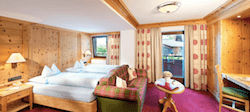
Natur & Spa Resort Der Alpbacherhof
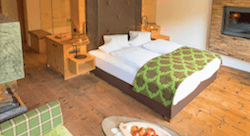
Hotel Zur Post

Hotel Wiedersbergerhorn

Haus Angelika

Haus Sonnwend
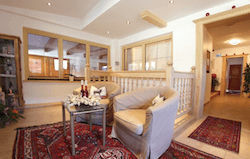
Pension Bergwald
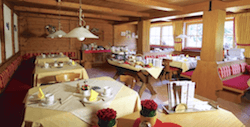

In recent years, farm holidays have become an essential component of Tirol summer tourism. But Alpbach is a not a place that easily accepts, let alone embraces, change. Continuity and tradition are the qualities that set this village apart from every other resort in Europe – and a determination to hold on to its cultural heritage. Therefore it comes as no surprise that, despite the demands of tourism, there are still more than 100 working farms here – many of them welcoming visitors.
The Stoffenhof

Back to Top
Where to Eat

Many visitors eat in their hotels as part of the half-board packages, so independent restaurants are few and far between. But there are a few standout establishments – notably Sigwart’s Tiroler Weinstuben in Brixlegg. Founded in 1774, it used to be a meeting point for farmers, craftsmen and traders, until Anton Sigwart bought the house in 1850.
Incredibly, the 4th generation of the Sigwarts still run it – Traudi cooks and Anton is the sommelier – and today the restaurant is listed in the Gault Millau guide as well as regularly featuring among Austria’s 200 best restaurants. Beef and veal, venison, lamb, game and freshwater fish are locally sourced, and their own garden produces herbs, fruit and vegetables.
In the village centre, the Boglerhof and Alpbacherhof hotels are both good for a smart dinner, while in Inneralpbach Hotel Wiedersbergerhorn is the place to go, and is strong on locally-sourced ingredients and traditional Tirolean recipes.

For something more laid back, head to Flo’s Restaurant & Bar or Messner’s Pizzeria, both of which serve excellent pizzas. The Jakober Bar, also in Gasthof Jakober, is a popular spot for a drink and snack.
If you fancy having a picnic lunch up the mountain, you can order a hamper or book a private Genuss picnic cabin on the Wiedersbergerhorn gondola, which is fitted out in red velvet with a pre-packed picnic basket.
For more information visit the Alpbachtal Summer website. Also see our winter resort report for more information on Alpbach.
Last, Wallx.net sent you details about the topic “Alpbach in Summer: the Prettiest Village in Austria❤️️”.Hope with useful information that the article “Alpbach in Summer: the Prettiest Village in Austria” It will help readers to be more interested in “Alpbach in Summer: the Prettiest Village in Austria [ ❤️️❤️️ ]”.
Posts “Alpbach in Summer: the Prettiest Village in Austria” posted by on 2019-06-12 11:50:40. Thank you for reading the article at wallx.net


